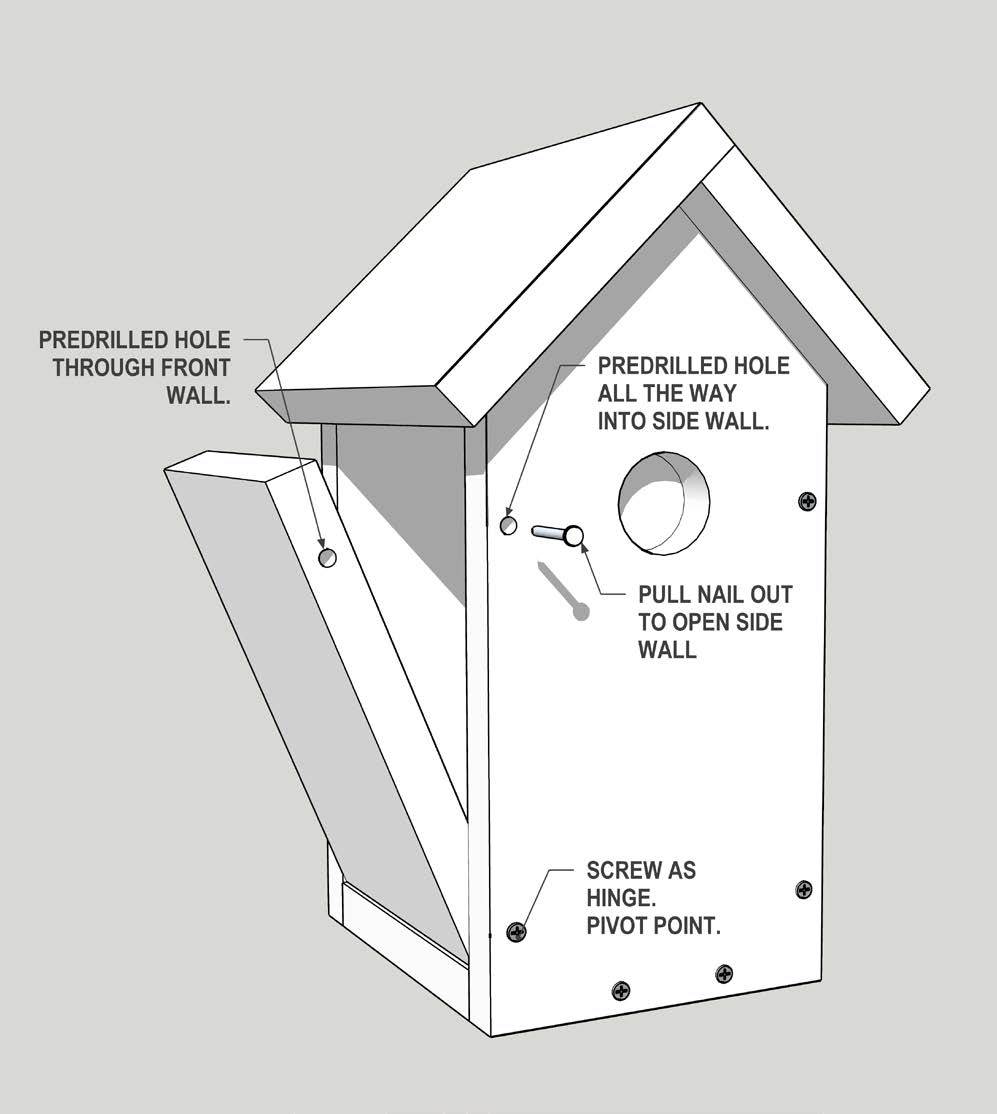Bluebird House nest boxes is one of the simplest ways you can help the bluebirds in your neighbourhood.
Because they are not picky, bluebirds will build their nests in a variety of nesting boxes.
Although the conventional 1 ½-inch entry hole and sloping roof box are more commonly utilized.
Research has shown that bluebirds frequently choose the slot nesting box over conventionally designed nesting boxes.
The bluebird house slot box could be the most effective method for attracting bluebirds in your location if you haven’t had much luck with conventional boxes.
Bluebird House construct boxes using untreated wood.
Ideally, boards used in nest box construction should be ¾ inch thick.
If smooth lumber is used in bluebird house, nest box construction, roughen the wood on the interior of the box just below the entrance hole.
This makes it easier for young birds to climb out of the nesting box when ready to fledge.
Assemble boxes using screws, aluminum nails or galvanized nails.
Entrance holes should be cut precisely 1 ½ inch in diameter.
Larger holes permit European starlings to enter the box.
These Bluebird House are exotic to the United States and will displace most cavity nesting birds
during nesting season.
If you have a problem with flying squirrels increasing the size of the entrance holes to your Bluebird House boxes.
Install metal entrance hole shields around the 1 ½ inch hole.
These shields can be obtained from stores specializing in bird-related items.
There should be vent and drainage slots in every box.
You can drill four to five ¼-inch holes in the bottom panel or trim ¼ of an inch off each of the box’s four corners to make drainage holes.
For ventilation, drill holes in the tops of the side panels or create gaps between the top of the box and the sides.
Bluebird boxes should have a light color applied on their outside.
Light-colored boxes maintain a lower temperature than dark-colored ones.
A perch should not be added to a bluebird nesting box.
Perches are not necessary for bluebirds, but they are used by nest rivals like house wrens and house sparrows to get to a box.
Measuring from the ground to the bottom of the box, mount your bluebird box at least four feet, but no more than 15 feet above the ground.
Whenever possible, mount bluebird nesting boxes on poles
made of metal or sunlight-resistant PVC pipes.
Boxes placed on such structures are easier to protect from rat snakes, raccoons and other nest predators.
A piece of ¾ inch electrical conduit makes an ideal
nesting pole.
Predator protections ought to be installed on boxes.
oil the pole behind the boxes with automobile oil for a quick and easy solution to keep predators out.
Alternatively, you might wrap a 36-inch-diameter sheet metal cone around the pole that supports the box.
Leave a minimum of one inch of space between the box and the nail or lag bolt if mounting boxes on trees is necessary.
By doing this, the box will not be forced off the tree’s trunk and the tree on which it is installed will be able to grow.
Open environments with few trees and little vegetation are ideal for box placement.
Because nest boxes are placed right in the middle of shrubs and forests, many bluebirds’ attempts to build them fail.
Position boxes so that they face a tree or shrub located within 25 to 100 feet of the box.
These woody plants provide safe landing areas for fledglings on their first flight.
A young bluebird landing on the ground is vulnerable to cats, dogs and other predators.
Bluebirds do not seem to prefer boxes facing in a particular direction.
Boxes should be erected 100 yards or more apart.
Nesting bluebirds will often fight with one another when boxes are placed close together.
Monitor boxes once a week during the nesting season.

Once hatchlings appear, do not check boxes after the young are 12-14 days old as the young might
try to leave their nesting box before they are ready to
fly.
As soon as a sparrow nest is found, it should be removed.
The sparrows will ultimately find another place to nest, even if this process might need to be performed many times.
Nesting boxes should not be removed throughout the winter.
For bluebirds, boxes provide the perfect place to rest on chilly winter evenings.

